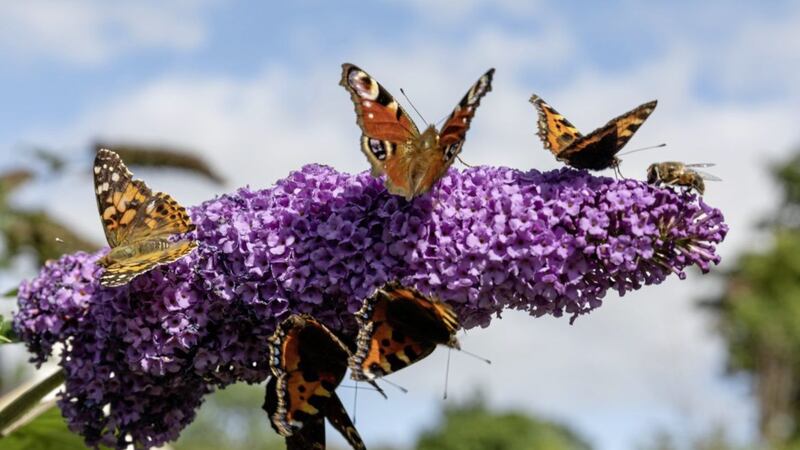AS THE summer season leans towards its near neighbour autumn, and gentle breezes transport fluffy thistledown, bearing seeds of the next generation to colonise new sites, there is a sense the natural world is slowing down and taking stock of its work.
Juvenile robins, losing their youthful mottled brown, are growing the familiar red breasted feathers of adulthood while last clutches of swallows and martins are being raised before their departure to warmer climes.
Last bursts of colour from our ditches and banks include the elegant purple loosestrife, with its spires of magenta flowers standing tall among the grasses and densely packed froths of fading creamy-white meadowsweet.
Also notable in recent weeks has been the abundance of winged colours as butterflies dance in the air before settling to gorge on the nectar of bramble and buddleia. Peacocks with their distinctive eye-marked upper sides, the rich black velvet of striking red admirals, creamy patched speckled woods, small tortoiseshells, and the painted lady are all visible all along local walkways.
A report from my cousin in Belfast, of a recent influx of the latter species in her garden, focused my mind on seeking out the butterfly here in the west. The painted lady, a medium-sized migrant with general black and orange coloration, is much like a duller version of the small tortoiseshell.
Numbers fluctuate greatly from year to year, with adults sometimes arriving in early spring, but their main flight season in Ireland is in late summer, peaking around mid-August which, according to reports, seems to be the case this year, with large numbers currently being observed along the east coast from Wicklow through Dublin to Co Down, and Donegal in the north west.
It is a very active and fast flier, covering up to a hundred miles per day during migration. Experts in recent years have noticed that more frequent large annual arrivals are occurring.
Commenting on this year’s surge in numbers, Jesmond Harding of Butterfly Conservation Ireland, said this mass migration of the butterfly from north Africa used to be a once-in-a-decade phenomenon but that this "is the third year in succession we have had big numbers of painted ladies, and this year is bigger than the previous two years".
He goes on to say that something is disrupting their normal migration patterns.
"It is certainly signalling some sort of change, either in the species itself, or in the climate."
He suggests that hotter drier conditions further south may be leaving less vegetation for the butterflies, stating, "I think they are following the food."
Watching out for butterflies recently also rewarded me with a chance meeting with the bright orange silver-washed fritillary, near a woodland clearing on the Lough Erne shoreline at Castle Archdale, Co Fermanagh, as it perched and fed on thistle and bramble.
Although the commonly used Irish word for butterfly is féileacán, a much older Irish name is Dealan Dé, meaning ‘light of the Gods’, a possible link to the belief in folklore, that butterflies would carry souls of the dead to the otherworld, their own metamorphosis perhaps representing journeys between the worlds.
The caterpillar, a life span, the cocoon equating to death and the emerging adult butterfly becoming the soul, fluttering off to the next stage. This link with the human soul is also reflected in the old Irish phrase ‘na féileacáin a bhrú as duine’ – meaning to crush someone or literally ‘to push the butterflies out of someone’.
Thanks for the tip-off, Gemma, and for focusing my attention more sharply on these handsome dancers of the air.








